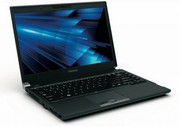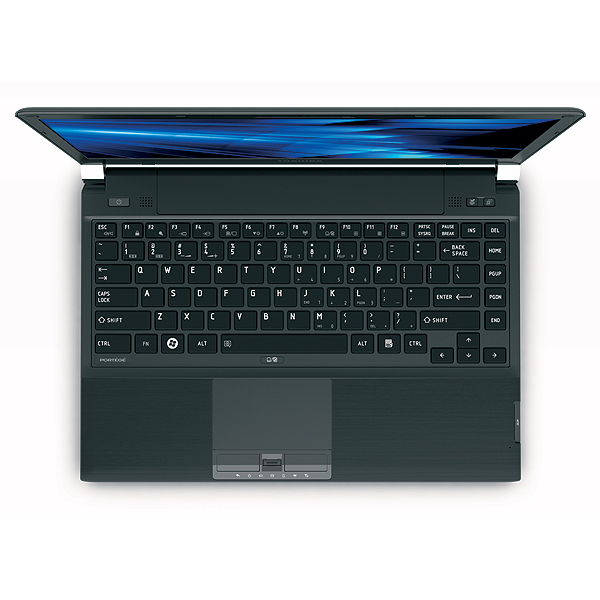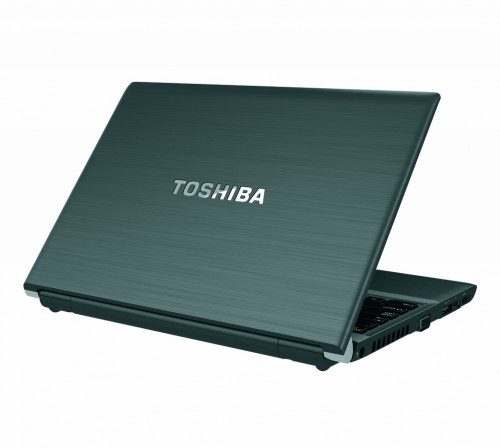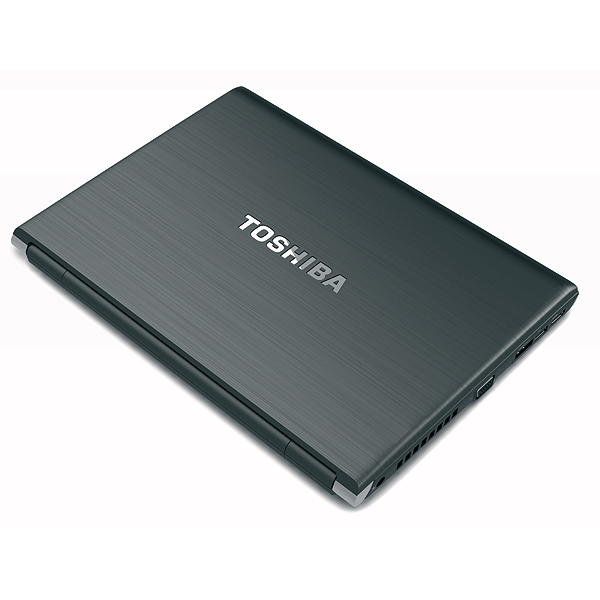Toshiba Portégé R700-14L
Ausstattung / Datenblatt
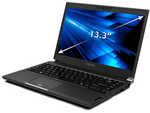
Preisvergleich
Testberichte für das Toshiba Portégé R700-14L
Quelle: Inside HW
 EN→DE Archive.org version
EN→DE Archive.org versionThe only multimedia segment that this notebook can't cope with is gaming, as expected. Intel's integrated graphics card may be doing its best, but fresh titles can't go over 20 fps even at lowest settings. Naturally, any game older than, say, two years will work just fine (at lowest detail levels). The sound subsystem is nothing to be envious about - what's more, the sound is reminiscent of bedside radios. Therefore, the speakers will serve their purpose, but if you wish for a higher quality solution, you'll have to look for an external solution. Battery autonomy allows for less ambitious excursions, and the thing we have to reproach in this department is the very slow charger, which takes an eternity to charge the battery once it's been significantly drained. We hope that the problem was specific to our sample. As far as other flaws, not many are present, the largest of which is major heating on the left side of the notebook. Whenever the notebook was put under full load, the part left of the Tab key seemed hot enough to cause minor burns. Still, we dared to test out theory and the consequences weren't nearly as dramatic. After all, winter's on its way, rumoured to be the coldest one in years... The second and perhaps tallest of obstacles for buying this PC is its very high price. It may be justified up to a point with top production quality, choice of materials and hardware, as well as the very Toshiba brand. The PC is also factory-shipped with Office Starter and Windows 7 Professional 64-bit preinstalled, none of which are dirt cheap. However, we feel that most users won't find these qualities to be redeeming enough and that they'll turn elsewhere in search for a cheaper variant. Those who wish for a high-quality, ultra-portable 13” notebook will, however, be catered for by this model.
Einzeltest, online verfügbar, Sehr kurz, Datum: 17.11.2010
Quelle: Itsvet
 HR→DE Archive.org version
HR→DE Archive.org versionEinzeltest, online verfügbar, Kurz, Datum: 08.11.2010
Kommentar
Intel Graphics Media Accelerator (GMA) HD Graphics: Intel HD Graphics oder GMA HD genannte onboard Grafikkarte welche im Package der Core i3/i5/i7 Arrandale Dual-Core Prozessoren untergebracht wird. Je nach Prozessormodell maximal mit 500 bis 766 MHz getaktet (Turbo Boost). Von Lenovo anscheinend auch GMA5700MHD genannt. Die gleichgenannte Intel HD Graphics Prozessorgrafik in den Sandy Bridge Prozessoren basiert auf einer neueren Architektur.
Diese Karten können nur sehr alte und sehr anspruchslose 3D Spiele flüssig darstellen. Anwendungen wie Office, Internet surfen, Bildbearbeitung oder (SD) Videoschnitt sind jedoch ohne große Einschränkungen möglich.
» Weitere Informationen gibt es in unserem Notebook-Grafikkartenvergleich und der Benchmarkliste.
450M: Baugleich zum Core i5-520M jedoch ohne AES Funktionen und daher ein schneller Mittelklasse Doppelkernprozessor.» Weitere Infos gibt es in unserem Prozessorvergleich Vergleich mobiler Prozessoren und der Prozessoren Benchmarkliste .
Ähnliche Geräte mit den selben Spezifikationen
Geräte eines anderen Herstellers und/oder mit einer anderen CPU
Geräte mit der selben GPU und/oder Bildschirmgröße


